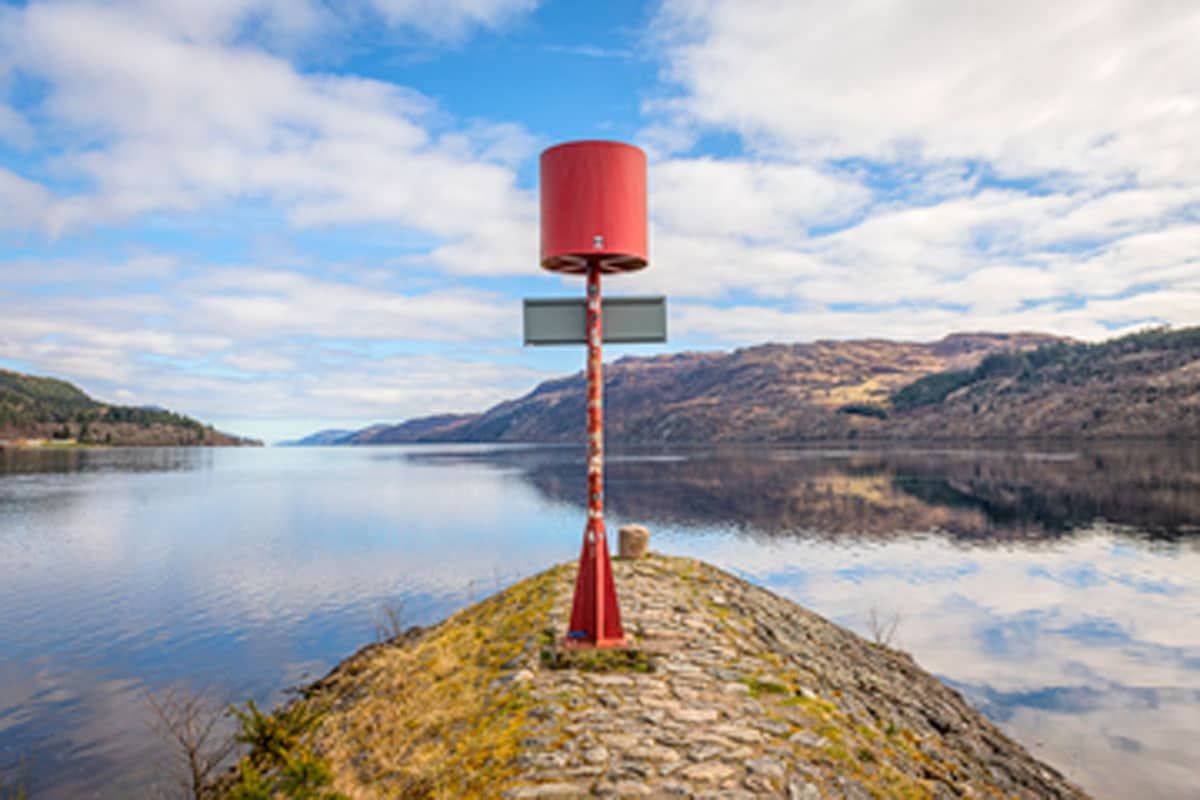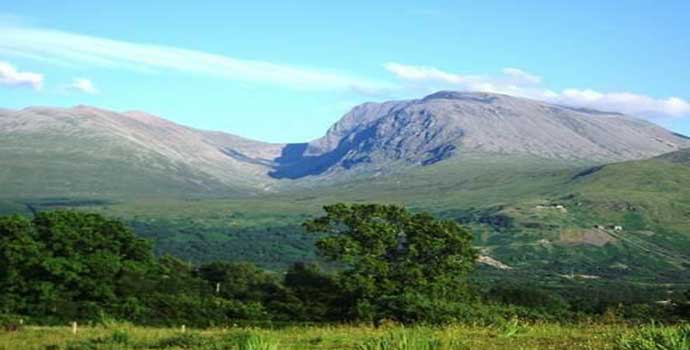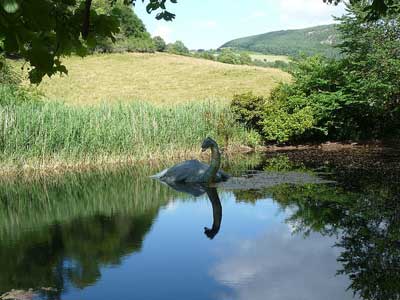
The Caledonian Canal is a 60-mile waterway that follows the route of the Great Glen, (Glen More nan Albin) a geological fault valley that stretches from Inverness to Fort William.
Today the canal, the Great Glen and surrounding countryside provide a multitude of visitor attractions and activities.
Built by Thomas Telford and the often-overlooked William Jessop, the canal is a marvel of engineering.
Construction began in 1803 and was expected to take around seven years to complete. But it was 1822 before the Caledonian Canal finally opened for navigation.
It allowed ships a sheltered passage between the North Sea and the Atlantic Ocean without braving the treacherous northern coastline.
The canal is a combination of man-made sections and several lochs which are, from the south west to the north east: Loch Linnhe, Loch Lochy, Loch Oich and Loch Ness.
The Great Glen Way
The Great Glen Way, part of the network of Scotland’s Great Trails, is a long-distance footpath that follows part of the canal route.
Following the trail is the perfect way to explore this beautiful part of Scotland and can be tackled as a multi-day challenge or over several visits.
The initial sections of the Great Glen Way are a gentle introduction and follow woodland trails and canal towpaths.
As you continue, the Clunes and South Laggan forests close in – the hills rise sharply in the background and the familiar shapes of Aonach Mòr and Ben Nevis stand proud.
There is a wide range of wildlife that call this part of Scotland home. It’s one of the great joys of the trail for keen-eyed naturalists to appreciate.
Among them are red squirrels, pine martins and the magnificent golden eagle.
You might also spot red deer grazing on hillsides or Highland cows (coos) at the edge of the path.
The Scottish Government produces an interesting leaflet with lots of information about the Great Glen Way and what flora and fauna you might encounter.
- For more information about what to see and do on the Great Glen Way, visit the official Great Trails website.
Great Glen Canoe Trail
For something a little out of the ordinary the Great Glen Canoe Trail, Scotland’s first dedicated canoe trail, is an exciting alternative mode of transport.
Loch Linnhe: Caledonian Canal
Fort William is the starting point (depending on the direction of travel) for many visitors keen to explore the Caledonian Canal, the Great Glen Way and all the nearby attractions.
This small town on the shores of Loch Linnhe, is a thriving hub for outdoor enthusiasts. It lies around 110 miles from Glasgow and 150 miles from Edinburgh.

It’s also the gateway to Glen Nevis, a glaciated valley, and one of the loveliest of Scotland’s glens.
For the enthusiastic walker, the trail, which has occasional dramatic drops, runs through the Nevis Gorge to the Steall Falls. Ben Nevis, Britain’s highest mount is easily accessible.
The nearby Ben Nevis Distillery which has a visitor centre and organises a series of distillery tours is a popular stopping point.
Only a short distance from Fort William you reach Banavie and the most impressive man-made feature of the canal – Neptune’s Staircase.
This remarkable feat of engineering is a series of interconnected locks that raise the water level by 60 feet within only 500 yards.
Decisions have to be made at Banavie. Should you continue following the canal and the Great Glen Way?
Or instead, follow the road along Loch Eil and head towards the Glinfinnan Viaduct of Harry Potter fame?
Loch Lochy: Caledonian Canal
While Gairloch is the smallest of places, it marks the beginning of Loch Lochy the next stage of the journey
Less than five miles from Gairlochy a short detour will take you to the village of Spean Bridge home to the world-famous commando monument, it’s a poignant tribute to wartime heroes.
A plaque reads, “In memory of the officers and men of the commandos who died in the Second World War 1939-1945. This country was their training ground.”
Spean Bridge is also where you will find the Clan Cameron Museum.
Loch Ness: Caledonian Canal
For many, the simple joy of Fort Augustus, at the southern end of the loch, is to stand on the towpath and watch the boats go through the flight of five locks.
The locks take the waiting yachts and small pleasure craft from the man-made section of the canal into Loch Ness.
Drumnadrochit, on the northern shores of the loch, is a pretty village with an abundance of visitor facilities.
The Loch Ness Centre lies at the heart of the village and caters for the summer crowds that arrive in the hope of catching a glimpse of the elusive creature.

Even St Columba was said to have had a monstrous sighting when he visited the area around AD 580.
Scotland’s best-known loch has a catchment area of nearly 700 square miles and holds more than all the lakes and reservoirs in England and Wales together.
There are many different cruising excursions available on Loch Ness.
They range from short sightseeing tours to longer cruises that explore the entire length of the loch.
Some of them, as part of the experience, will stop at The Loch Ness Centre in Drumnadrochit and Urquhart Castle.
Loch Oich: Caledonian Canal
Back on the Great Glen Way, the canal winds past the ruins of Invergarry Castle, on the western banks of Loch Oich, the highest point on the canal.
The castle, once the seat of the MacDonnell Clan of Glengarry, was destroyed by the Duke of Cumberland in 1743. Sadly little remains today.
Around a mile north of Fort Augustus is Inchnacardoch Bay and the loch’s only island – Cherry Island (Eilean Muireach).
It’s described by Historic Environment Scotland as a “monument comprises the remains of a crannog, a late prehistoric dwelling constructed upon a partly or wholly artificial island. It includes submerged remains of what may be a medieval castle.”
A mere two miles from Drumnadrochit, Urquhart Castle is the centrepiece of an area rich in Pictish history. Today the castle is managed by Historic Environment Scotland and is open to the public.
- This article about Urquhart Castle on Truly Edinburgh has more information.
Last stop: Inverness
In the final miles between Drumnadrochit and Inverness, the trail winds through a changing landscape.
From one mile to the next, it uses the canal towpath, old military roads and the drove roads on which Highlanders once took their beasts to the great cattle tryst at Crieff.
Crieff was a place where Rob Roy MacGregor once conducted business.
But soon enough, the final sea lock at Clachnaharry, a former fishing village on the Aird Peninsula, marks the end of a journey.
As a standalone destination, Inverness is a great place to explore. But it’s also a springboard to the Scottish Highlands.